This website uses cookies
This website uses cookies to enable it to function properly and to analyse how the website is used. Please click 'Close' to accept and continue using the website.


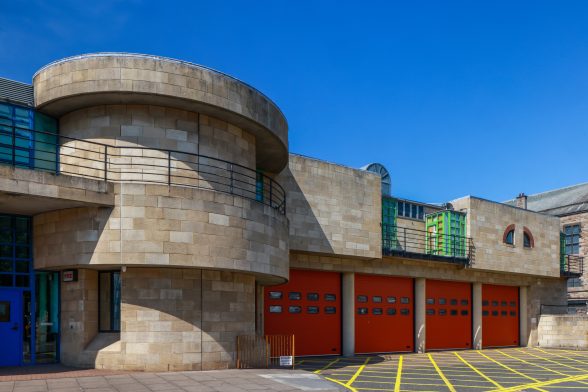
Image: John East
C20 has strongly supported the proposed listing of the Mackintosh-inspired Tollcross Fire Station in Edinburgh, as an excellent and significant exemplar of early post-modernist expression in Scotland. The news comes amid a push for greater recognition of post-war fire stations, with none currently listed on the national registers of England, Scotland and Wales.
Opened in 1986 at a cost of £2.2m, the Tollcross station replaced the cramped firefighting headquarters at Lauriston, which opened in 1900 and was designed with horses and horse-drawn vehicles in mind. The new building was drawn up by Wick-born architect Donald William Bain, who worked with Lothian Regional Council Department of Architectural Services and also on the development of Livingston new town during the 1960s.
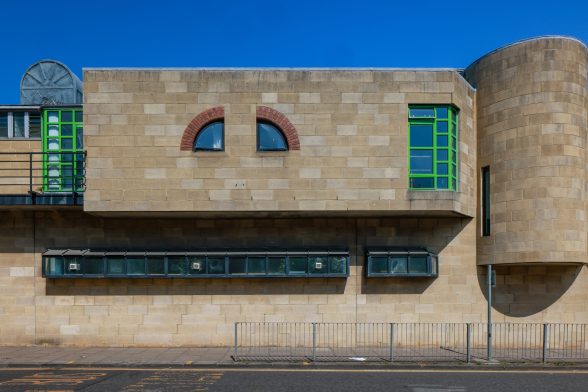
Image: John East
Scotland’s best of the 80s?
With design elements borrowed from Charles Rennie Mackintosh – the station’s lime green gridded windows onto Ponton Street in particular echoing the ‘hen run’ at Glasgow School of Art – and witty references to other architectural styles, the station has been described as one of Scotland’s best buildings of the 1980s.
The main elevations are characterised by alternating volumes of projecting and recessed stonework and glazing, while a three-panel relief sculpture mounted above the ground floor depicts firemen manning the hoses on either side of a flaming building. Designed by then student artist David Roxburgh, the artwork is the result of a design competition arranged between the architects and the head of the Sculpture Department of Edinburgh College of Art. The theme was ‘Firemen at Work’ and the brief stated that it was to be less than six feet by six feet in scale, and not exceed a budget of £2000.
The Society believes the building to be an outstanding example of the typology for the era, and a clever response to both the site and the requirements of fire station use, which blends well into its setting. The treatment of the elevations, the careful use of materiality and the modulated composition all distinguish it from more utilitarian emergency service architecture.
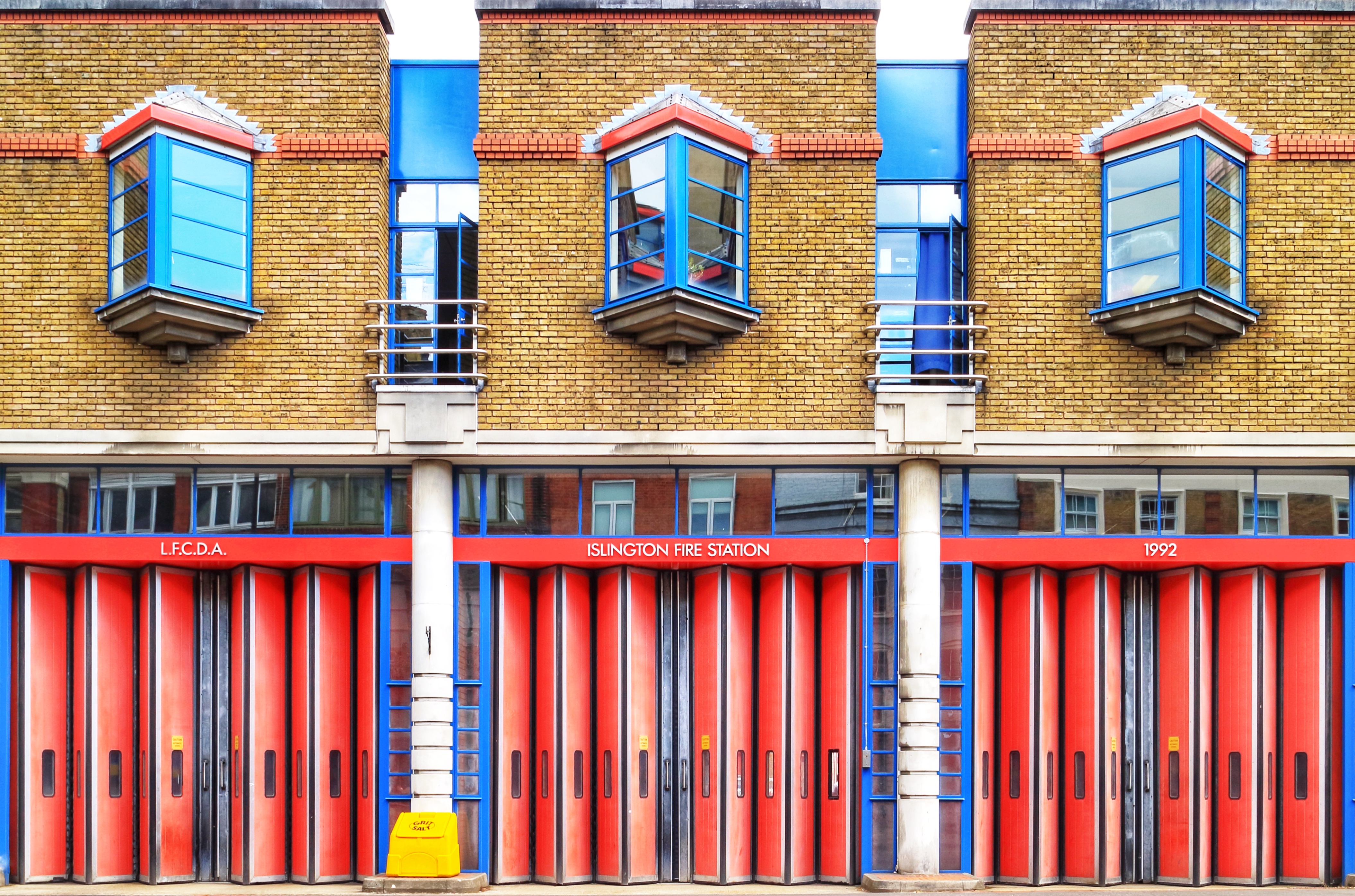
Image: @hjgrubb Flickr
Blazing a Trail: Post-1945 Fire Stations
Through the 1950s and 1960s a wave of modern fire stations appeared, as post-war Britain took a forward-thinking approach to the architectural challenge of rebuilding. Crawley (1956) and Swindon (1959), with their block brickwork and metal windows, exemplify the domestic festival stylings of stations of this time. There were radical shifts – in Britain’s housing stock and energy supplies; in methods of construction; in car ownership and its implications on towns; in cultural patterns and fabric technologies.
So many interconnected post-war factors changed forever the service and response required from brigades, and therefore the type, location and distribution of fire stations. They could now be located on new, less
constricted, out-of-town sites with better connectivity to modern road networks. Appliances got bigger, so the appliance bays and doorways responded. Prefabricated building systems, steel frames and modular cladding meant fire station designs could be rolled out across a region.
Gone were the masonry and decorative embellishments of the pre-war fire stations, replaced by the concrete framed efficiency of modernism. The character of the fire station became, through the later 20th century, increasingly functional, efficient and industrial, borrowing the materials and aesthetics of industrialisation to create many very dull, but some highly lively and creative, solutions to housing a fire service. Shoreditch of 1965 and Oxford of 1971 are two very different but excellent examples.
Late C20 fire stations often have great charm, and high build qualities, showing that the art of architecture remained vibrant. Great Holm in Milton Keynes (1989, now closed) and Upper Street fire station in Islington, north London (1992) all have great architectural qualities and postmodern style, and deserve to be better known.
The 20th century charted 100 years of rapid change for fire brigades, both reactive and proactive. Today’s station, and the equipment it contains, would be incomprehensible to an Edwardian fireman, but at its core the service remains the same: heroes waiting for the call.
This piece contains extracts from ‘Blazing a Trail’ – a potted history of twentieth century Fire Stations by Billy Reading, taken from the current issue of C20 Magazine 2023-1 and available to buy from the C20 Shop.
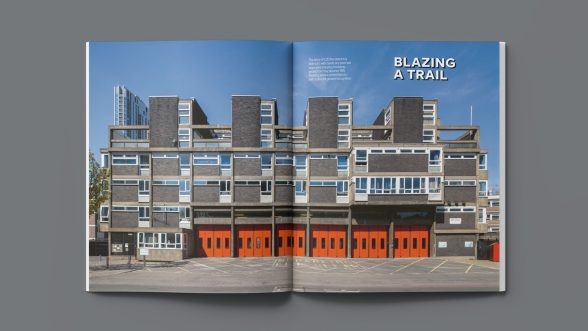
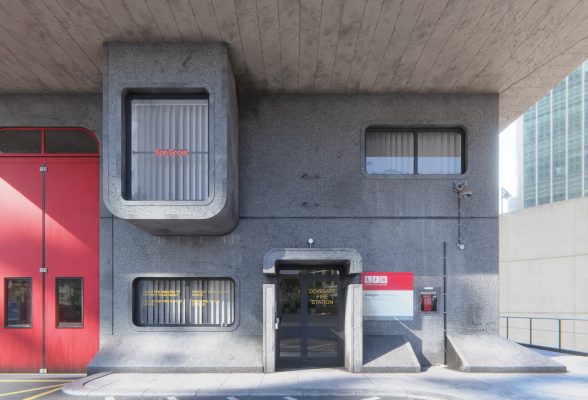

Become a C20 member today and help save our modern design heritage.